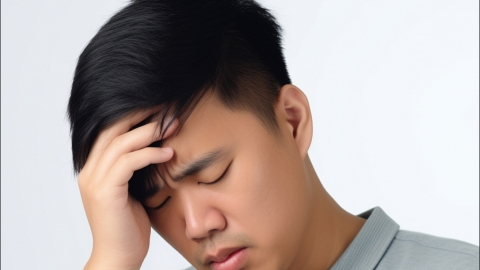What causes pain on the top of the head?
Generally, pain on the top of the head may be caused by mental stress, unhealthy lifestyle habits, migraines, cervical spondylosis, meningitis, or other factors. Symptomatic management such as general treatment and medication may be needed. If discomfort occurs, timely medical consultation is recommended, and corresponding treatment should be conducted under the guidance of a physician. Detailed explanations are as follows:

1. Mental Stress
Long-term mental tension, anxiety, or excessive stress can cause vasoconstriction within the skull and poor blood circulation, leading to pain on the top of the head. This type of pain typically presents as a feeling of distension or pressure and may be accompanied by psychological symptoms such as mental tension, anxiety, and insomnia. It is recommended to relieve symptoms by relaxing, deep breathing, and physical activity.
2. Unhealthy Lifestyle Habits
Poor habits such as chronic late-night stays, insufficient sleep, and excessive eye strain may also cause pain on the top of the head. These habits can lead to physical fatigue and affect blood circulation and nerve function. Improving lifestyle habits and maintaining sufficient sleep time are recommended to help alleviate the pain.
3. Migraine
Migraines may be related to abnormal dilation of cerebral blood vessels and inflammatory responses. They are characterized by one-sided, pulsating headaches, which may be accompanied by nausea, vomiting, and sensitivity to light. It is recommended to use medications such as ibuprofen tablets, indomethacin tablets, and nimodipine tablets under the guidance of a doctor for treatment.
4. Cervical Spondylosis
Cervical spondylosis is mainly caused by chronic strain of the cervical spine. Degeneration of intervertebral discs and bone spurs may compress nerve roots or vertebral arteries, causing pain on the top of the head, which may be accompanied by neck stiffness, shoulder pain, arm numbness, and other symptoms. It is recommended to follow medical advice to use medications such as chlorzoxazone tablets, eperisone hydrochloride tablets, and sodium naproxen tablets to relieve symptoms.
5. Meningitis
Meningitis refers to an infectious disease of the meninges. When meningitis occurs, the meninges become inflamed due to infection with bacteria, viruses, or other microorganisms, resulting in severe headache, which may be accompanied by fever, nuchal rigidity, and impaired consciousness. It is recommended to use medications such as acyclovir tablets, ornidazole dispersible tablets, and dexamethasone acetate tablets for treatment under the guidance of a physician.
It is recommended to gently massage the top of the head daily using the fingertips to apply light pressure and circular motions, promoting blood circulation and relieving pain.




